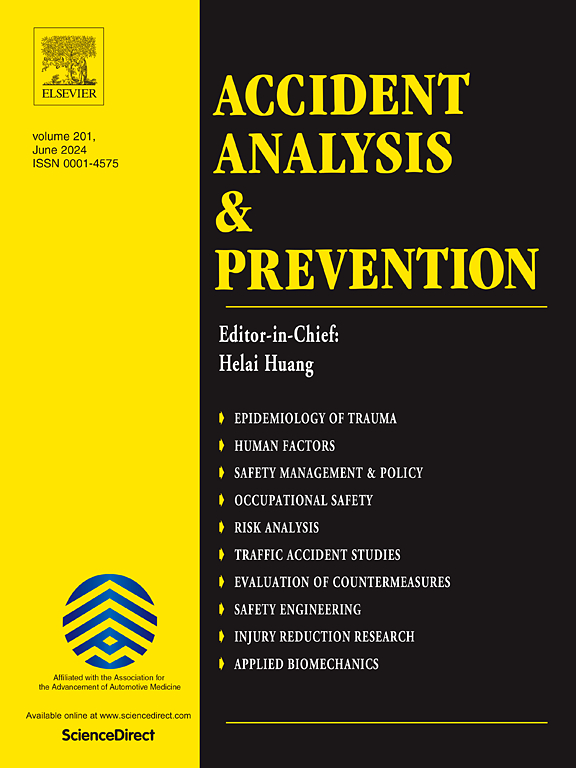如何评估自动驾驶时的态势感知?AD模式下视觉注意对态势感知措施的影响
IF 6.2
1区 工程技术
Q1 ERGONOMICS
引用次数: 0
摘要
在自动驾驶(AD)中,使用了多种客观和主观的方法来评估态势感知(SA)。在航空等领域,SAGAT等已建立的方法被用作评估SA的最新技术,而在AD中,对最有效的措施的共识较少。在一项有41名受试者的驾驶模拟器研究中,通过操纵AD时的视觉注意力,实验产生了四种不同水平的SA。在ad模式和接管情况下,记录了评估SA的不同方法,包括主观评分、凝视行为、表现和探测措施。本文分析、报道和讨论了AD模式下视觉注意的操纵对SA的不同测量值的影响以及它们之间的关系。结果表明,在AD模式下,主观SA、凝视行为和性能测量的注意水平存在显著差异,而在AD模式下,完全阻止驾驶风景的视觉处理的影响却小得惊人。对于特定设计的接管场景,在对SA的需求增加的情况下,SA测量与绩效之间的关系可以显示出来。一方面,这意味着SA对接管情况下的表现可能有关键影响,但它也强调了驾驶员视觉处理的鲁棒性和效率,即使在接管前只有很少的视觉处理的情况下,也能实现安全的接管反应。讨论了评估SA结果的含义以及AD中SA背后的过程。本文章由计算机程序翻译,如有差异,请以英文原文为准。
How to assess situation awareness while driving with automation? Impact of visual attention during AD mode on measures of situation awareness
A variety of objective and subjective methods is used to assess situation awareness (SA) in automated driving (AD). In fields like aviation, established methods like SAGAT are used as state of the art for assessing SA, whereas in AD, there is less consensus on the most valid measures. In a driving simulator study with N = 41 participants, four different levels of SA were experimentally created by manipulating visual attention during AD. Different methods for assessing SA were logged during AD-mode and during takeover situations including subjective ratings, gaze behaviour, performance and probe measures. The impact of the manipulation of visual attention during AD mode on the different measures of SA as well as their relation to each other is analysed, reported and discussed. Results show pronounced differences between levels of attention during AD-mode in subjective SA, gaze behaviour and performance measures while preventing visual processing of the driving scenery completely while during AD mode caused surprisingly little impact. A relation between measures of SA and performance can be shown for specifically designed takeover scenarios with increased demands on SA. On the one hand, this implies that there can be a critical impact of SA on performance in takeover situations but it also highlights the robustness and efficiency of drivers’ visual processing that enables safe takeover responses even in situations with only little visual processing before a takeover. The implications of the results for assessing SA as well as the processes behind SA in AD are discussed.
求助全文
通过发布文献求助,成功后即可免费获取论文全文。
去求助
来源期刊

Accident; analysis and prevention
Multiple-
CiteScore
11.90
自引率
16.90%
发文量
264
审稿时长
48 days
期刊介绍:
Accident Analysis & Prevention provides wide coverage of the general areas relating to accidental injury and damage, including the pre-injury and immediate post-injury phases. Published papers deal with medical, legal, economic, educational, behavioral, theoretical or empirical aspects of transportation accidents, as well as with accidents at other sites. Selected topics within the scope of the Journal may include: studies of human, environmental and vehicular factors influencing the occurrence, type and severity of accidents and injury; the design, implementation and evaluation of countermeasures; biomechanics of impact and human tolerance limits to injury; modelling and statistical analysis of accident data; policy, planning and decision-making in safety.
 求助内容:
求助内容: 应助结果提醒方式:
应助结果提醒方式:


